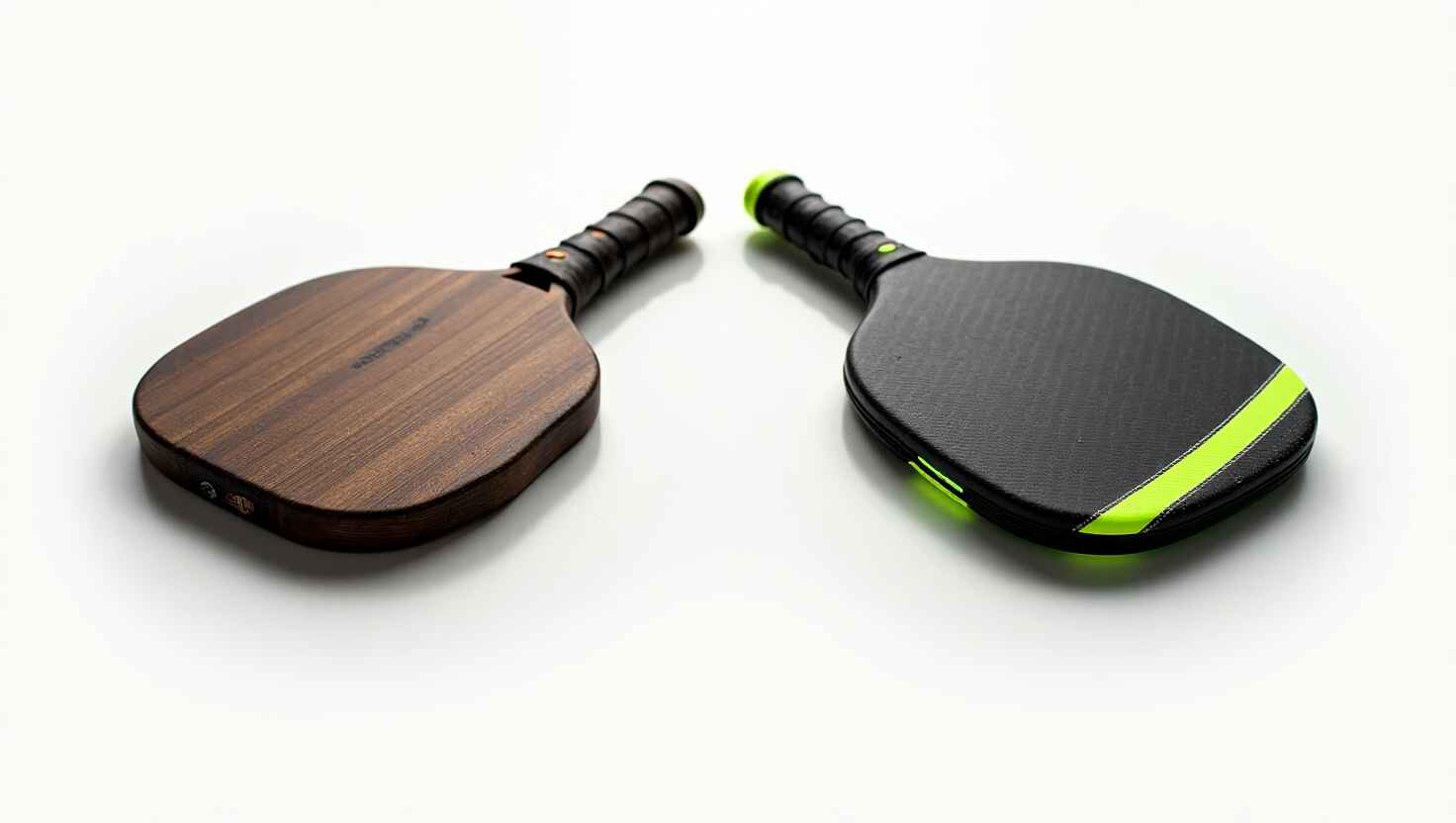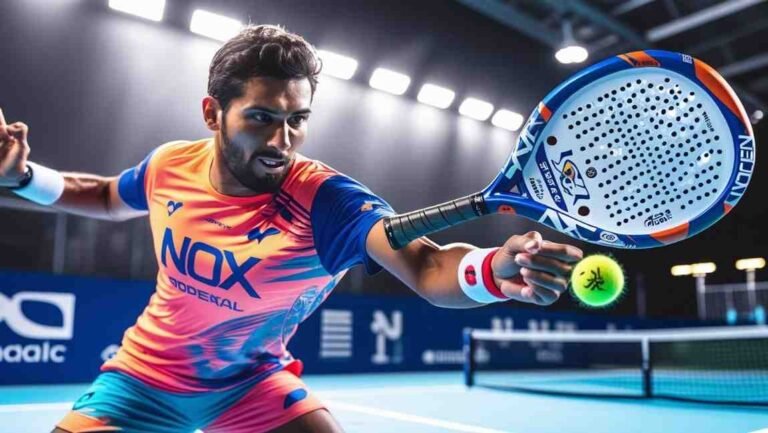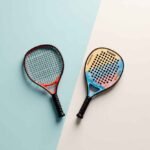Padel rackets have come a long way since the sport’s inception in the 1970s. The evolution of padel rackets has transformed how players approach the game, with advancements in materials, design, and technology improving control, power, and durability. Early models were simple wooden paddles, but today’s rackets feature carbon fiber frames, optimized weight distribution, and textured surfaces for enhanced spin.
Understanding how these innovations have shaped modern padel rackets helps players make informed choices when selecting their gear. The right racket can elevate your performance, whether you are a beginner or a seasoned pro.
What You’ll Learn in This Article
- How padel rackets have changed over the years.
- The key material and design innovations that impact performance.
- What the future holds for padel racket technology.
By the end of this article, you’ll have a deeper appreciation for how technological advancements continue to redefine padel equipment.
How Have Padel Rackets Changed Over Time?
Padel rackets have evolved significantly since the sport first emerged in the 1970s. Early rackets were simple, solid wooden paddles with no perforations. As the game gained popularity, manufacturers began incorporating new materials and designs to improve performance, durability, and comfort.
1. The Wooden Era (1970s – 1980s)
The earliest padel rackets were made entirely of wood. They were heavy and solid but lacked the modern aerodynamics we see today. They offered minimal maneuverability without perforations and required more physical effort to generate power.
2. The Introduction of Composite Materials (1990s – Early 2000s)
In the 1990s, padel racket design started to change with the introduction of fiberglass and lightweight aluminum. This transition made rackets lighter, easier to handle, and more forgiving for beginners. Manufacturers also introduced perforations to enhance aerodynamics, reducing air resistance for better speed and control.
3. Carbon Fiber Revolution (Mid-2000s – Present)
By the mid-2000s, carbon fiber and Kevlar became the dominant materials. These rackets are lighter, stronger, and more durable than their predecessors. The sweet spot was optimized, and rackets started featuring foam or EVA rubber cores, improving comfort and shock absorption.
4. The Smart Racket Era (Future Innovations)
The latest innovation in padel rackets includes integrated sensors and AI-driven data tracking. These smart rackets analyze a player’s performance, offering insights on shot accuracy, power, and spin. Future developments are expected to focus on enhanced vibration reduction, ergonomic designs, and eco-friendly materials.
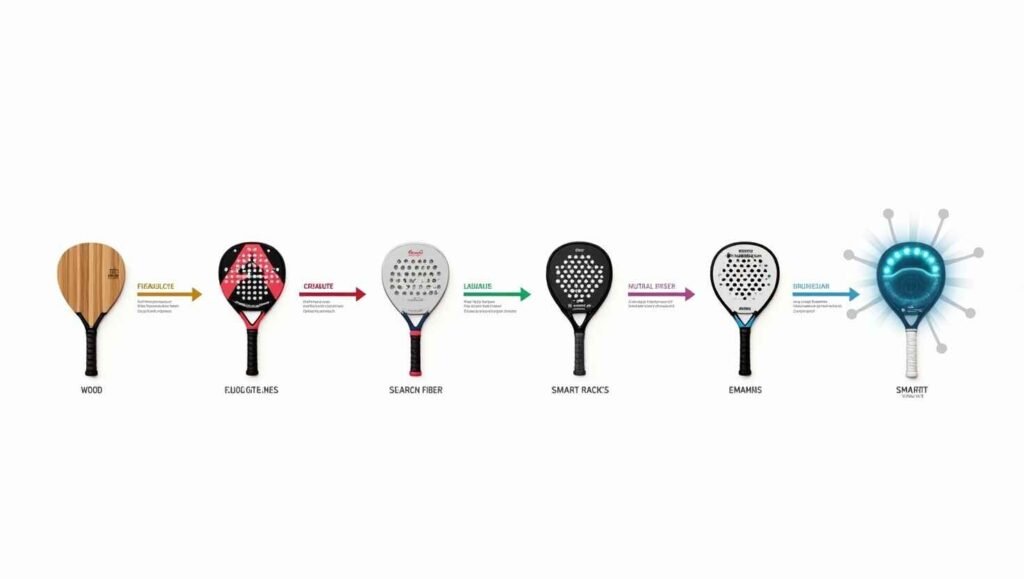
Materials & Technologies That Transformed Padel Rackets
The evolution of padel rackets is closely linked to advancements in materials and manufacturing technologies. Over the years, brands have experimented with different core compositions, frame materials, and surface textures to improve racket durability, power, and control.
1. Frame Materials: From Wood to Carbon Fiber
- Wood (1970s—1980s): The earliest padel rackets were entirely made of wood, which made them heavy and stiff.
- Aluminum and fiberglass (1990s—early 2000s): These materials were introduced to reduce weight and increase flexibility, making rackets more beginner-friendly.
- Carbon Fiber & Kevlar (Mid-2000s – Present): The strongest and lightest materials available, offering maximum power, durability, and shock absorption.
2. Core Technology: Foam vs. EVA Rubber
- Foam Core: This material provides a soft feel, absorbs vibrations, and offers better control. It is ideal for beginner and intermediate players.
- EVA Rubber Cores are denser and more powerful, offering incredible rebound speed for aggressive players. They are more common in professional-grade rackets.
3. Surface Coating & Textures for Spin
- Smooth Surfaces (Early Designs): Older rackets featured plain surfaces, limiting spin capabilities.
- Rough Textures & 3D Prints (Modern Rackets): Manufacturers now add gritty textures or embossed surfaces to increase spin potential.
4. Smart Racket Technology (Future of Padel)
- Some brands integrate AI-powered sensors to track performance metrics, shot accuracy, and ball impact zones.
- Future innovations may include adaptive materials that adjust to different playing conditions.
How Padel Racket Designs Have Evolved for Different Playing Styles
Padel racket designs have changed significantly to cater to different playing styles. Whether a player prioritizes power, control, or spin, modern rackets are now tailored to enhance performance based on skill level and play style.
1. Shape & Balance: Control vs. Power Rackets
- Round Shape (Control & Precision)
- The more prominent sweet spot for better accuracy.
- Evenly distributed balance, making it ideal for defensive players.
- Preferred by beginners and control-focused players.
- Teardrop Shape (Balanced Performance)
- A mix of power and control, suitable for all-around players.
- Medium balance and good maneuverability.
- A common choice for intermediate players.
- Diamond Shape (Power & Aggression)
- Smaller sweet spot but maximum power on smashes.
- Top-heavy balance, best suited for offensive players.
- Used mainly by advanced and professional players.
2. Weight Adjustments: Lighter vs. Heavier Rackets
- Lightweight Rackets (340g – 370g):
- Easier to handle and ideal for quick reactions.
- Reduces risk of arm fatigue or injury.
- Best for women, beginners, and defensive players.
- Heavier Rackets (370g – 390g):
- Adds more power to shots but requires better technique.
- Preferred by aggressive players looking for intense volleys and smashes.
3. Customization: Interchangeable Weights & Smart Technologies
- Some brands now allow players to adjust weight distribution by adding removable weights to fine-tune balance and performance.
- AI-powered sensors are integrated into modern rackets to track shot statistics and player performance.
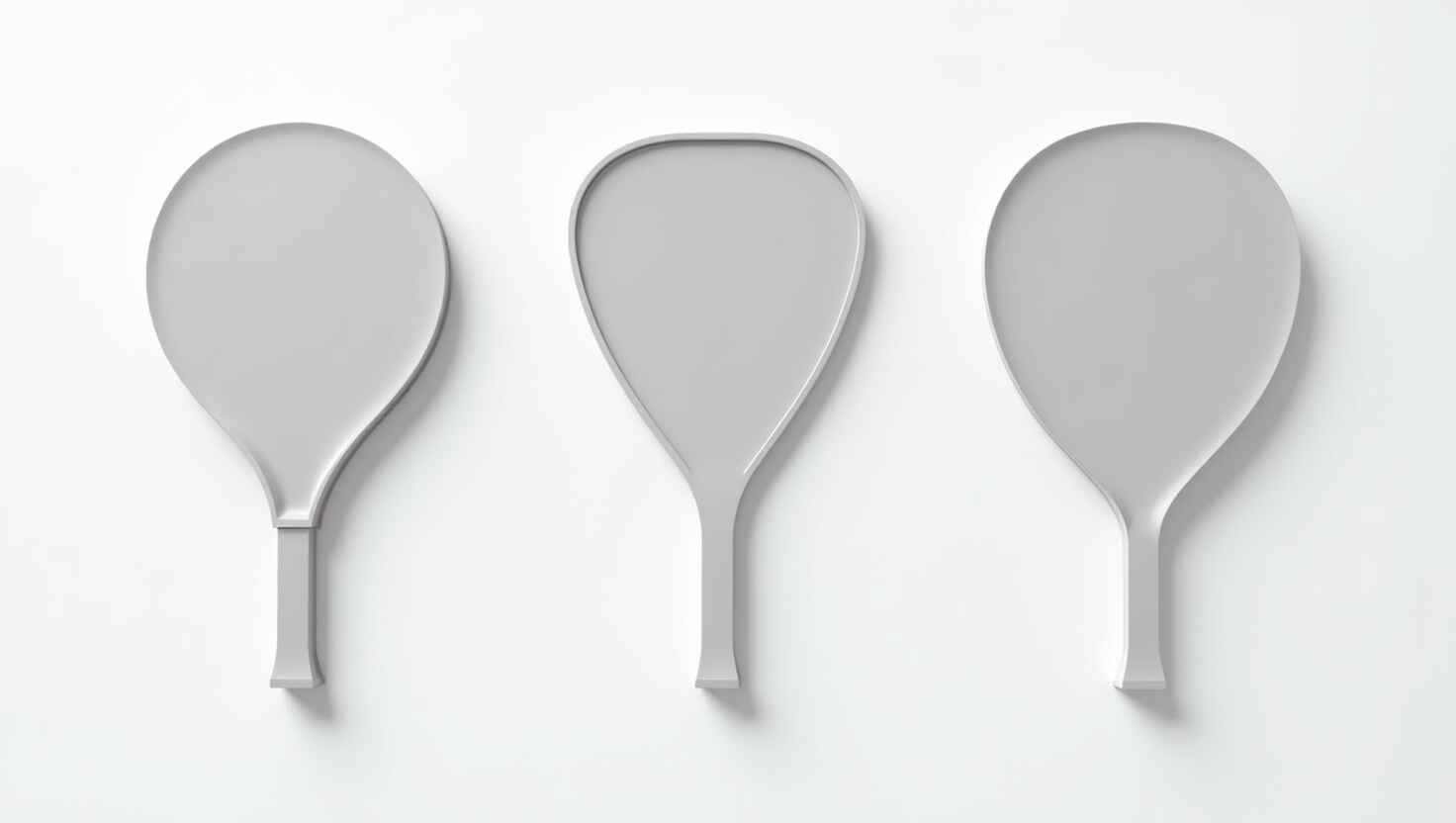
Future Innovations in Padel Racket Design
The future of padel racket technology is becoming more advanced than ever. Players can expect better durability, precision, and performance with improvements in materials, smart tracking, and customizability. Here’s a look at the key innovations likely to dominate the next generation of padel rackets.
1. Smart Technology Integration
Padel rackets are starting to include built-in sensors that provide real-time data on:
- Shot speed and impact force.
- Spin and control efficiency.
- Player movement patterns and stroke consistency.
Brands like HEAD and Babolat have already experimented with smart sensors, allowing players to analyze their gameplay and technique through mobile apps.
2. Advanced Carbon & Graphene Materials
- Next-gen carbon fiber composites will make rackets even lighter yet stronger.
- Graphene-enhanced frames are expected to improve shock absorption, reducing the impact on players’ wrists and elbows.
- Hybrid materials could increase sweet spot precision while extending racket lifespan.
3. Adjustable Weight & Balance Systems
New designs allow players to customize weight distribution, helping them switch between control and power playstyles within seconds. Some upcoming innovations include:
- Magnetic or screw-on weight adjustments that can be added or removed.
- Dynamic handle modifications to change grip balance for faster maneuverability.
4. Eco-Friendly & Sustainable Rackets
With a global shift toward sustainability, brands are exploring recyclable materials such as:
- Bio-based resins instead of synthetic adhesives.
- Reinforced bamboo or organic fiber for racket frames.
- Recyclable rubber grips to reduce environmental impact.
5. Improved Spin & Aerodynamics
Manufacturers are testing micro-textured racket faces that enhance spin and ball control. Future models might include:

Conclusion: How Far Padel Rackets Have Come
Padel rackets have come a long way since their early wooden frames. Materials, design, and technology advancements have transformed them into high-performance sports equipment tailored to different playing styles.
- The transition from wood to fiberglass and carbon fiber has made rackets lighter, stronger, and more durable.
- Innovations like smart sensors, adjustable weight systems, and aerodynamic frames reshape how players train and compete.
- The future promises eco-friendly materials and AI-powered analytics, making Padel more sustainable and data-driven.
For casual players and professionals alike, the evolution of padel rackets means better control, power, and comfort on the court. As technology advances, players can expect even more customization and performance enhancements in the years ahead.
Whether you’re a beginner choosing your first padel racket or an experienced player looking for cutting-edge features, understanding how rackets have evolved can help you make the best choice for your game.
Ready for More? You’ll Love This Insight
FAQs
Padel rackets have evolved from simple wooden frames to high-tech carbon fiber designs. Early rackets were heavy and lacked durability, while modern ones are lighter, more powerful, and designed for better control.
Today’s padel rackets use fiberglass, carbon fiber, and Kevlar to improve durability, flexibility, and power. Some high-end models also incorporate graphene and titanium for enhanced performance.
New technologies like 3D surface textures, smart sensors, and vibration reduction systems have improved spin, precision, and player comfort. Adjustable balance weights now allow customization for different playing styles.
Old designs were flat and heavier, with limited aerodynamics. New designs feature honeycomb cores, perforated surfaces for airflow, and ergonomic grips to enhance maneuverability, control, and speed.
The future of padel rackets includes eco-friendly materials, AI-powered performance tracking, and even smart rackets that analyze your shots and suggest real-time improvements.
